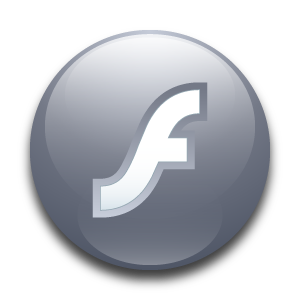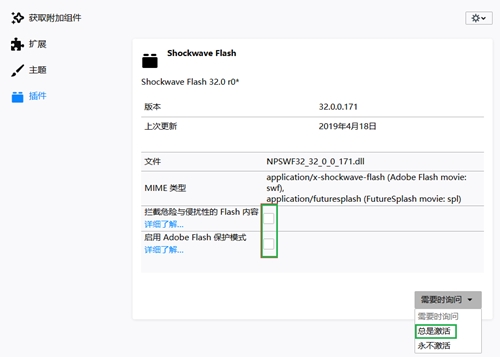

- #Fnable flash player firefox install#
- #Fnable flash player firefox driver#
- #Fnable flash player firefox code#
- #Fnable flash player firefox mac#
#Fnable flash player firefox install#
If the version is not the most updated version, install Flash Player using Safari or Mozilla Firefox. To know the Flash Player version installed in your computer, see Find Flash Player document. Important: Adobe recommends that you have the latest Flash Player.
#Fnable flash player firefox mac#
For more information on installing latest Flash Player, see the following links: Installing Flash Player | Windows | Mozilla Firefox Installing Flash Player | Mac | Safari 1) Open your Firefox browser, on the top-right corner, click the three-bar icon and click Add-ons. If you don't see multiple versions of Flash Player, install Flash Player using Mozilla Firefox or Safari and repeat steps 1 through 5.On Mac OS: If you see multiple entries for Flash Player, disable Flash Player Plugin for Chrome by clicking Disable.Note: The Pepper Flash Player plug-in is specified in the location attribute as shown below: On Windows: If you see multiple entries for Flash Player, disable the Pepper version by clicking Disable.Click Details and move to the Flash section.In the address bar, type the following and press Enter: chrome://plugins.Note: If you have issues with integrated Flash Player plug-in in Chrome, report the issue to Google.Įnable system Flash Player in Google Chrome Select Always Activate on Flash‘s drop-down menu. Select Plug-ins to open the plug-in list. Click Add-ons to open the tab in the shot directly below. If you have installed Flash Player using Mozilla Firefox or Safari, Google Chrome displays it in the plug-in list. Press the Open menu button at the top right of Firefox’s window. As a workaround, enable the system plug-in in Google Chrome. It's possible that you have issues with Adobe Connect, Adobe AIR badge installation, or some of the game sites in the latest Chrome Flash Player plug-in.
#Fnable flash player firefox code#
PS: This code is in Java so you may have to convert it into C# format.(in Google Chrome)Flash Player is integrated with Google Chrome as Pepper plug-in.

#Fnable flash player firefox driver#
tProperty("", driverPath+"geckodriver.exe") įirefoxProfile testprofile = profile.getProfile("debanjan") ĭesiredCapabilities dc = DesiredCapabilities.firefox() ĭc.setCapability(FirefoxDriver.PROFILE, testprofile) įirefoxDriver driver = new FirefoxDriver(dc) ĭriver.manage().timeouts().implicitlyWait(10,TimeUnit.SECONDS) Use the following code to open with your new FirefoxProfile "debanjan": String driverPath = "C:\\Utility\\BrowserDrivers\\" Let's assume we created a new FirefoxProfile by the name "debanjan". First you need to Start the Profile Manager, second is to Create a New Profile and third is to use the same profile in Test scripts. So, Create a New Firefox profile and use the same in the Test script involves three steps process. If you used different profiles everywhere, the SSL certificates you accepted or the plug-ins you installed would be different and that would make the tests behave differently on the machines. You should be consistent with the profile you use on all development and test execution machines. Automation profile should be light to load and have special proxy and other settings to run good test. When you want to run automation reliably on a Firefox browser it is advisable to make a separate profile. It is worth mentioning that the default Firefox profile is not very automation friendly. With Selenium 4.3.0, gecko driver v0.16.0 & Mozilla Firefox 53.0 this code works well with.


 0 kommentar(er)
0 kommentar(er)
